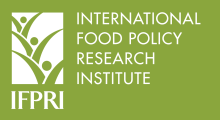Resource information
Using a mathematical-programming agricultural-sector model of Egypt, this paper analyzes mechanisms for allocating scarce water and for charging the farmers the Operation and Management (O&M) costs of irrigation and drainage, currently covered by the government. The effects of cost recovery are negative but minor. A crop charge (based on crop water consumption per land unit) and a volumetric charge both discourage consumption. The former is easier to implement but does not stimulate water-saving technical change. A 15% cut in agricultural water supplies (permitting a 79% increase in non-agricultural use) raise farmer incomes and has moderate negative effects on consumer welfare and production; a 30% cut causes disproportionately larger negative effects, including large increases in the agricultural trade deficit. Efficient market-based allocations yield higher production and avoid unequal water access, associated with the inefficient alternative of forcing half the farmers to cut their use. However, water sales to farmers at prices reducing demand by 15-30% lead to 20-35% declines in farmer incomes. This suggests the need to explore reforms endowing the farmers with tradable water rights.


